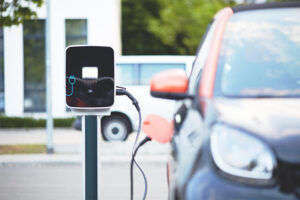
RHODaS: New solutions to improve the efficiency of electric propulsion systems for heavy vehicles
February 10, 2023
LoRaMesher: Advanced IoT services for LoRa Mesh networks
February 14, 202313/02/2023
The flexibility of electrical systems is fundamental in the process of energy transition towards more sustainable energy generation models. The European Commission promotes the development of solutions that respond to the challenges of managing electricity distribution networks in the future energy system based on renewable sources. An increasingly large proportion of fluctuating electricity generators, such as wind and solar systems, makes it difficult to calculate the loads that are being supplied.
The increasing demand of energy due to the increase in use of electric vehicles is an additional difficulty. The electric vehicle plays a key role in all households, not only in terms of charging vehicles but also in the fact that they can store energy when there is a surplus, to use it when there is a lack. This energy storage is also key in terms of the electricity market and even sustainability. For all these reasons, to achieve a safe, resilient energy supply, production and demand must be streamlined based on distributed generation systems for the flexible production, storage and consumption of energy.
In this context, the FEVER (Flexible Energy Production, Demand and Storage-based Virtual Power Plants for Electricity Markets and Resilient DSO Operation) project was established. Its aim is to demonstrate and implement new, flexible solutions in the generation, consumption and storage of electrical energy to achieve optimal operation in the distribution network.
As part of the FEVER project, the Centre for Technological Innovation in Static Converters and Drives (CITCEA) of the Universitat Politècnica de Catalunya - BarcelonaTech (UPC) is developing two-way chargers for electric vehicles and solutions for the optimal management of electricity networks and electricity markets based on renewable sources, taking advantage of the potential for flexibility of energy production, demand and storage resources. In this way, it contributes to meeting the demand for specific services for the electricity network, to make it safe, efficient and resilient.
The FEVER project has revealed that new domestic equipment must be developed with this aim.
In this respect, a charger for an electric vehicle is being developed that is domestic, two-way and integrated into a smart IoT environment, which enables a combination of the available resources in a domestic environment: consumption, photovoltaic generation, stationary storage and interaction with the distribution network.
A company is participating in the project that seeks to innovate in its products and offer solutions for its clients to optimise the energy management of homes and the interaction with the distribution network. The company distributes and markets electrical energy and has detected the need to transform the mature, traditional business of distribution towards new business opportunities, in the framework of what are known as smart grids.
FEVER is in an intermediate phase of execution, after capturing the detailed requirements of the drive system. This is a project whose objectives include establishing a framework of continuity in the relationship between the company and CITCEA-UPC.
Results and impact
The results of this project can be extrapolated to any other electrical energy system. The converters and control algorithms that have been developed can be applied to any technology that requires power electronics.
In addition, the variety of business models that open up is remarkable in a sector that is in full transformation from the traditional energy model (generation-transport-distribution) towards a renewable generation model, with flexible demand and storage capacity.
The project is in a very advanced stage, which enables the transfer of this technology to the market. The proposal has obtained positive feedback in relation to its feasibility from recognised institutions such as ESADE.
Budget and funding
FEVER has a total budget of almost 10 million euros (€9,847,839.82) and is carried out in the framework of the Horizon 2020 (February 2020 – July 2023). The project participants are 18 members from 8 countries.


Related Projects
- The Centre of Technological Innovation in Power Electronics and Drives (CITCEA) of the Universitat Politècnica de Catalunya - BarcelonaTech (UPC) is leading a European project that redesigns the current energy system to stabilise the power grid in the face of high renewable energy penetration. The proposed solutions involve using the loads that consume energy to help balance the grid.
- The Environmental Engineering (ENMA) research group leads the WhATTer project with the aim of developing an innovative and sustainable solution for the treatment of textile wastewater through an electrochemical/alkaline electrolysis system that allows for simultaneous hydrogen production. The project is carried out in collaboration with the Textile Technology (TECTEX) and Polymeric Materials and Textile Chemistry (POLQUITEX) research groups at the facilities of the Institute of Textile Research and Industrial Cooperation of Terrassa (INTEXTER) at the Universitat Politècnica de Catalunya - BarcelonaTech (UPC).
- The Centre for Technological Risk Studies (CERTEC) at the Universitat Politècnica de Catalunya – BarcelonaTech (UPC) is coordinating the European Program for Wildfire-Prepared Communities (FIREPRIME), a project designed to develop tools and services for wildfire prevention in Europe, with the goal of improving safety in the wildland-urban interface by actively involving the community in its own protection.
- The Center for Technological Innovation in Static Converters and Drives (CITCEA) at the Universitat Politècnica de Catalunya – BarcelonaTech (UPC) has designed a smart wireless application developed to optimize the electricity consumption of high-power devices.




